Are you eager to attract colorful feathered friends to your garden and enjoy their cheerful songs? One fantastic way to do that is by creating your very own birdfeeder from a simple plastic bottle.
Not only is this project environmentally friendly, but it also offers a fun and creative activity for all ages. In this step-by-step guide, we will show you how to make a bird feeder out of a plastic bottle and create a haven for birds.
As you follow along, you’ll discover how to make a bird feeder out of a plastic bottle that is both functional and aesthetically pleasing, providing a source of nourishment for your avian neighbors.
So, gather your materials and join us in this eco-friendly endeavor as we embark on the journey to create a bird-friendly paradise in your own outdoor space.
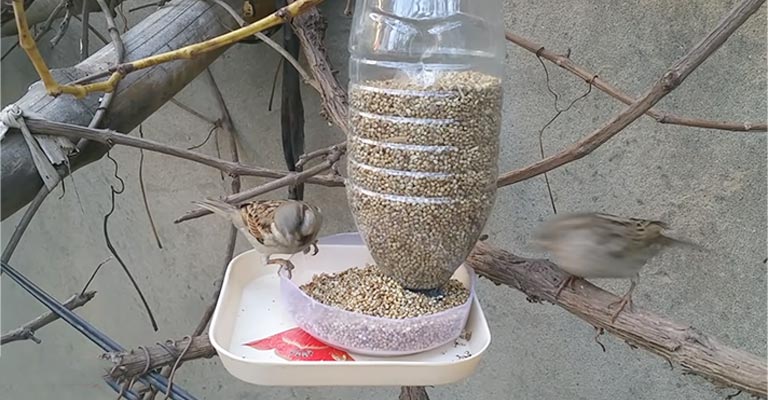
How to Make a Birdfeeder Out of a Plastic Bottle?
Creating a birdfeeder out of a plastic bottle is a fantastic DIY project that not only recycles a common household item but also contributes to the well-being of local birds.
Here’s the step-by-step process of making your very own plastic bottle birdfeeder.
Step 1: Prepare the Bottle
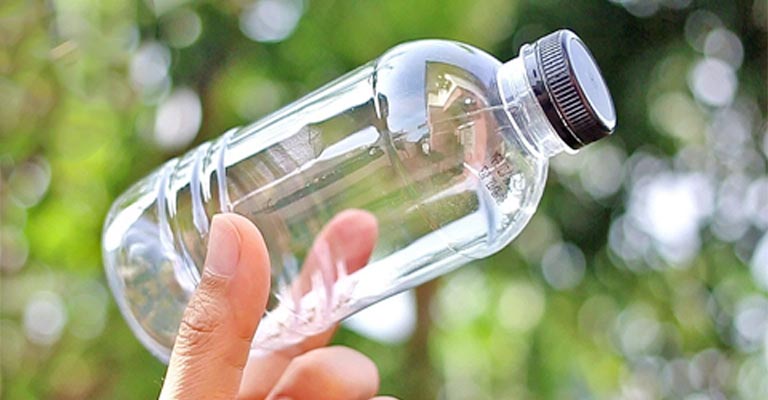
Begin by removing any labels and cleaning the plastic bottle thoroughly. Make sure it’s dry before proceeding. You can also use soap to remove any residual smells that might deter birds.
Step 2: Create Feeding Ports

Using a utility knife or scissors, carefully cut small openings near the base of the bottle. These will serve as feeding ports for the birds. You can make as many ports as you like, but three or four evenly spaced around the bottle works well.
tep 3: Add Perches
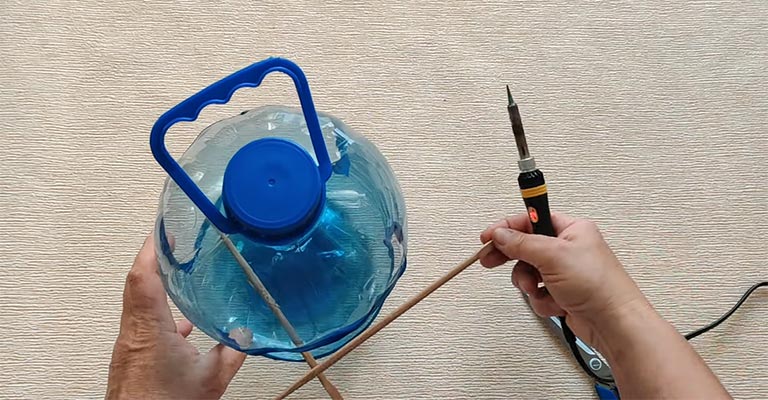
Next, you’ll need to attach wooden dowels or sticks as perches for the birds. Insert these through the bottle’s neck. They should be long enough for the birds to comfortably land and access the feeding ports. You may want to glue them in place to ensure they stay secure.
Step 4: Fill with Birdseed
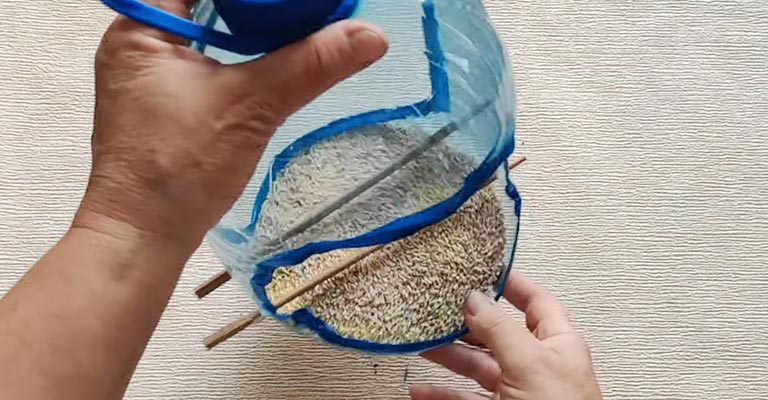
Now, it’s time to add the birdseed. Unscrew the bottle’s cap and fill it with your chosen birdseed. Make sure not to overfill; leave some space at the top to prevent spillage.
Step 5: Decorate (Optional)
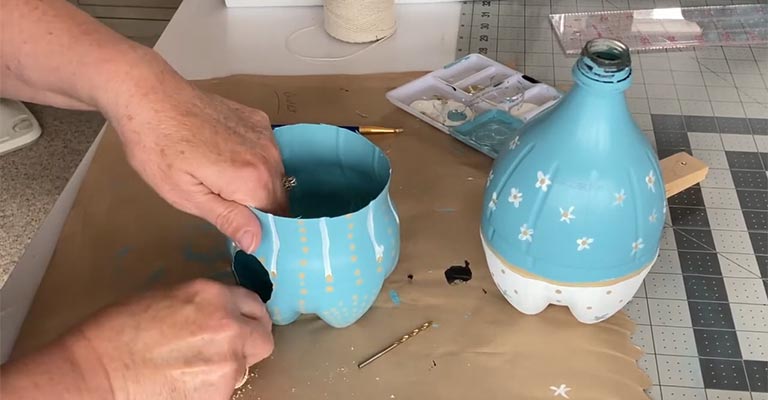
Get creative! You can choose to paint or decorate your birdfeeder to make it more visually appealing. Use non-toxic paints and let your imagination run wild. Just remember to allow the paint to dry completely before hanging the feeder.
Step 6: Secure a Hanger
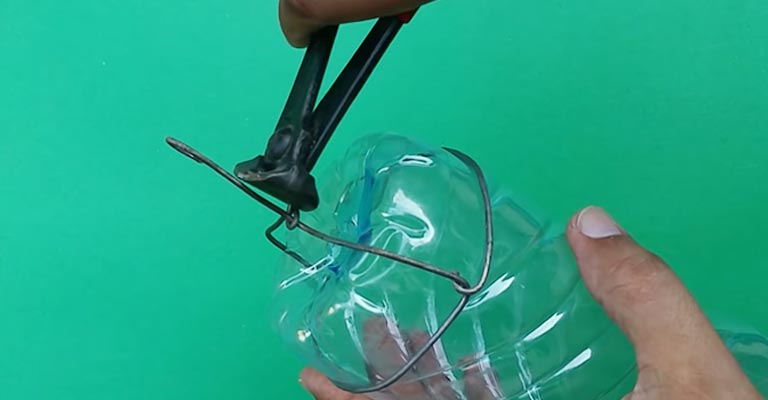
To hang your birdfeeder, you can use a piece of string or wire. Create a loop at the top and ensure it’s strong enough to support the filled bottle. Attach the hanger securely to the bottle cap.
Step 7: Hang Your Birdfeeder
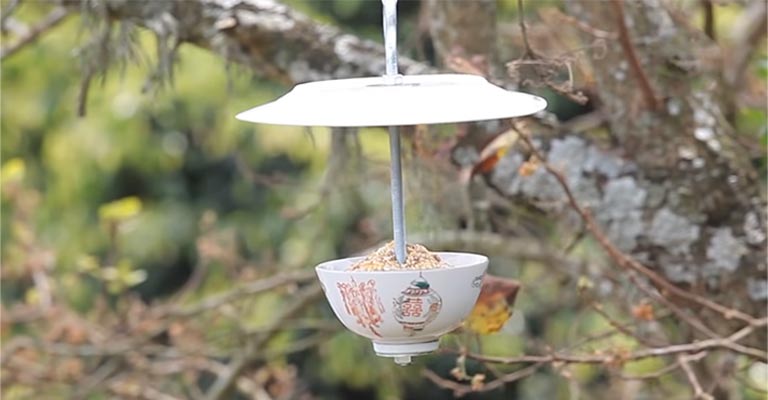
Find a suitable location to hang your birdfeeder. It’s best to choose a quiet spot with a clear view of the feeder, so you can enjoy watching the birds. Ensure it’s hung at a height that’s easily accessible for you to refill and clean as needed.
Step 8: Enjoy Birdwatching
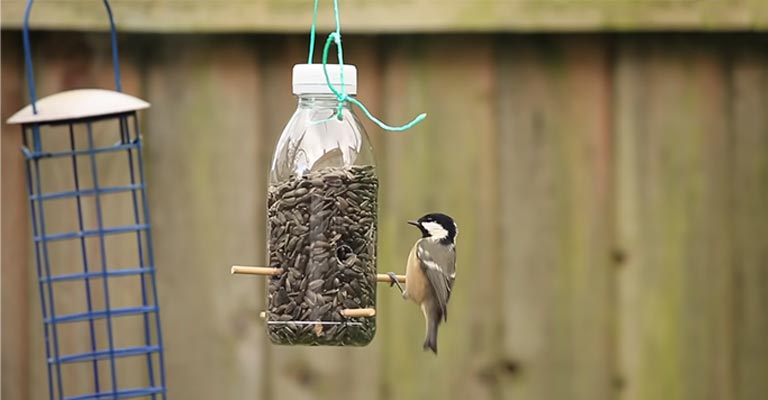
Now, all that’s left to do is sit back and enjoy the delightful birds that will visit your new feeder. Different bird species may come, depending on the type of birdseed you’ve used and your geographical location.
Maintenance
Regularly clean and refill your birdfeeder to keep it inviting for the birds. Keep an eye on the weather; extreme conditions might require you to take down the feeder temporarily. Experiment with different types of bird seed to attract a variety of bird species.
By following these steps, you’ve not only created a practical and eco-friendly birdfeeder but also fostered a stronger connection to nature right in your own backyard. Observing the birds that visit can be a peaceful and rewarding experience.
Where to Hang the Plastic Bird Feeder?
Choosing the right location for hanging your plastic bird feeder is crucial to ensure the safety and enjoyment of the visiting birds.
The placement of your bird feeder affects the types of birds you attract, as well as how frequently they use it. Here’s a comprehensive guide to help you determine the best spot for your feeder:
Consider Visibility and Accessibility
Choose a spot where you can easily see the feeder from a window or a comfortable seating area. This allows you to enjoy birdwatching without disturbing the birds.
Make sure the feeder is easy for you to reach for refilling and cleaning. Accessibility is essential for maintaining the feeder properly.
Bird-Friendly Landscaping
Position the feeder relatively close to natural shelter like trees or shrubs. Birds will appreciate having a quick escape route if they feel threatened.
Ensure there are clear flight paths for birds to approach and leave the feeder. Birds prefer open areas around the feeder, so avoid placing it too close to obstacles.
Safe from Predators and Overexposure to Sunlight
Hang the feeder at a height and location where it’s difficult for cats and other ground predators to pounce on feeding birds. Be cautious of reflective surfaces, such as windows.
Birds might mistake reflections for open space and collide with the window. Use window decals or other methods to prevent window strikes.
Some sun exposure can help keep the birdseed dry, but too much sun can overheat the feeder. Choose a location that offers a balance of sun and shade, if possible.
Shelter from Strong Winds
Protect the feeder from strong winds, which can cause the seeds to spill or discourage birds from visiting.
Keep it Close to the House
A feeder near the house will be more convenient for observation, and birds may feel safer if it’s closer to human activity.
If you plan on having multiple feeders with different types of bird seed, consider placing them in different locations to accommodate various bird species’ preferences.
Suspended or Ground Level
Depending on the bird species you want to attract, you can hang your feeder or place it on a secure platform. Hanging feeders are ideal for songbirds, while ground-level feeders can be suitable for doves, quail, and some other species.
Avoid hanging the feeder in high-traffic areas where human activity might deter birds from visiting. Birds prefer peaceful surroundings.
Minimize Squirrel Access
If squirrels are a problem in your area, choose a location that makes it difficult for them to access the feeder. You can use squirrel baffles or place the feeder away from surfaces squirrels can jump from.
Birds rely on their feeder as a food source. Be consistent in refilling it, especially during the colder months when natural food sources are scarce.
Adjust as Needed
Bird behavior can be unpredictable. If you notice that your chosen location isn’t attracting the birds you desire, don’t hesitate to move the feeder to a more suitable spot.
The ideal location for hanging a plastic bird feeder balances visibility for you, safety for the birds, and practicality for maintenance.
By carefully considering these factors, you can create a bird-friendly environment that attracts a diverse array of beautiful winged visitors to your yard, providing endless enjoyment and a closer connection to nature.
FAQs
How often should I clean my bird feeder?
It’s essential to clean your bird feeder regularly to prevent the growth of mold, bacteria, and diseases. Cleaning it every two weeks or more frequently during wet or humid conditions is a good practice.
What type of birdseed should I use?
The type of birdseed you should use depends on the birds you want to attract. Common options include black oil sunflower seeds, nyjer (thistle) seeds for finches, and mixed seeds.
How can I keep squirrels away from my bird feeder?
Squirrels are often attracted to bird feeders. You can deter them by using squirrel baffles, placing the feeder away from jumping-off points, or investing in squirrel-proof feeders.
Is it safe to feed birds year-round, even in the winter?
Feeding birds year-round can be beneficial, especially during the winter when natural food sources are scarce. However, it’s crucial to maintain a consistent feeding schedule to avoid dependency and provide birds with a reliable source of nutrition.
Can I feed birds with kitchen scraps and leftovers?
While many birds can safely consume kitchen scraps like fruit scraps, bread, or rice, it’s essential to avoid feeding them anything salty, sugary, or moldy.
Conclusion
By repurposing a plastic bottle to make a birdfeeder, you’ve not only enriched your outdoor space but also played a role in supporting local bird populations.
Your DIY creation provides a reliable source of sustenance for these winged visitors, giving you the opportunity to observe and appreciate their beauty up close.
As you hang your newly crafted birdfeeder and begin to witness the various species it attracts, you’ll undoubtedly find joy and fulfillment in your efforts.
This project serves as a reminder of the positive impact that small, sustainable changes can have on the environment and our connection to the natural world.
So, as you revel in the chirping melodies and colorful plumage that graces your garden, remember that this plastic bottle birdfeeder is a symbol of your commitment to wildlife and a testament to your creative spirit.